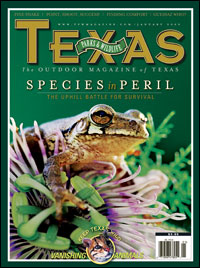
Texas Reader : Deadly Silence
Carson's Silent Spring is as relevant today as it was 47 years ago.
By E. Dan Klepper
Silent Spring (Mariner Books), Rachel Carson's alarming call to end the rampant and unregulated use of pesticides across the U.S., was first made available to the reading public in 1962. The watershed book was responsible for kick-starting the Green movement in America, and its indictment of the government-supported use of toxic substances and the false safety claims made by the chemical companies who manufactured them put an end to the use of DDT in the U.S. and Canada. However, the assault on our environment by pesticide use is hardly over. The introduction of chemical toxins into our environment has continued despite the science that suggests we should do otherwise. A recent report on the presence of toxic chemicals in humans and house pets from the nonprofit Environmental Working Group states that "major gaps in our system of public health protections allow most industrial chemicals on the market with no mandatory safety testing. Chemical companies do not have to prove products are safe before they are sold, or understand how much of their chemicals end up in people let alone pets." Most disconcerting of all are the federal regulatory agencies that place more value on cost-effectiveness than human health in assessing acceptable levels of toxicity.
Silent Spring makes a clear-cut argument for restricting chemical toxins today just as it did 47 years ago. Carson's style is clean and deliberate and her straightforward delivery of cause-and-effect circumstances makes difficult material easy to understand. In particular, her explanation of the toxic cycle - from elm trees to earthworms - regarding attempts to halt Dutch elm disease is enlightening and two-fold. It details the deadly effects of insecticide spray on wildlife (in this particular case migratory robins) and clarifies why murky "parts-per-measurement" statistics are so important to understand when gauging chemical toxicity.
"The trees are sprayed in the spring (usually at the rate of 2 to 5 pounds of DDT per 50-foot tree, which may be the equivalent of as much as 23 pounds per acre where elms are numerous) and often again in July, at about half this concentration. Powerful sprayers direct a stream of poison to all parts of the tallest trees, killing directly not only the target organism, the bark beetle, but other insects, including pollinating species and predatory spiders and beetles. The poison forms a tenacious film over the leaves and bark. Rains do not wash it away. In the autumn the leaves fall to the ground, accumulate in sodden layers, and begin the slow process of becoming one with the soil. In this they are aided by the toil of earthworms, who feed in the leaf litter, for elm leaves are among their favorite foods. In feeding on the leaves the worms also swallow the insecticide, accumulating and concentrating it in their bodies. ... Undoubtedly some of the earthworms themselves succumb, but others survive to become 'biological magnifiers' of the poison. In the spring the robins return to provide another link in the cycle. As few as 11 large earthworms can transfer a lethal dose of DDT to a robin. And 11 worms form a small part of the day's rations to a bird that eats 10 to 12 earthworms in as many minutes."
After almost half a century, Silent Spring continues to impart relevant and difficult lessons about our broad use of chemical toxins and their detriment to our environment. Perhaps it is time once again to learn them.

